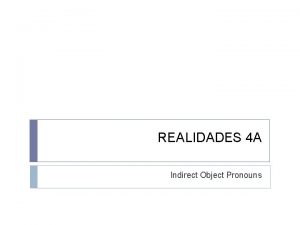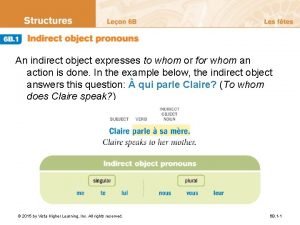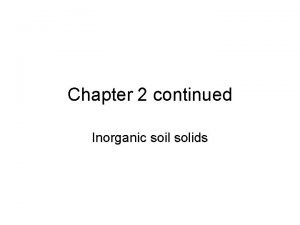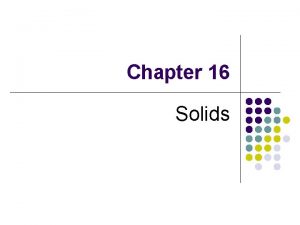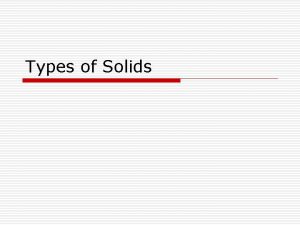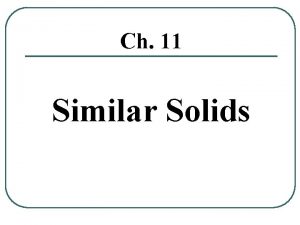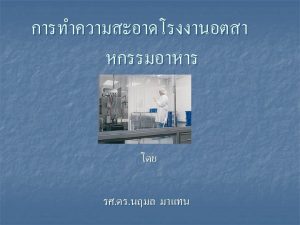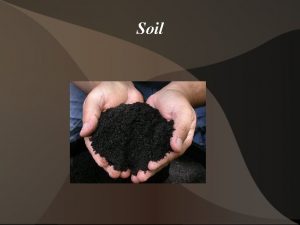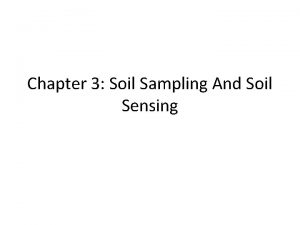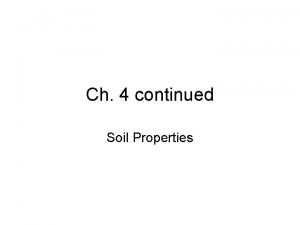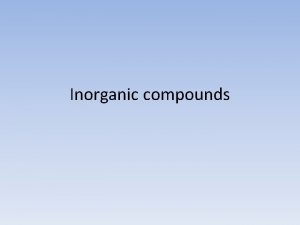Chapter 2 Inorganic Solids in Soil continued http




















- Slides: 20

Chapter 2 Inorganic Solids in Soil continued

http: //www. uwgb. edu/dutchs/graphic 0/rockmin/ion-cov. gif

What holds a covalent bond together? Nuclei repel, but are attracted by the pair of negative electrons. http: //www. webchem. net/images/bonds/covale 2. gif

Pauling’s Rules predict configuration of atoms into a crystal structure http: //www. gly. fsu. edu/~salters/GLY 1000/6_Minerals_index. html

Soil clay minerals Silica Tetrahedrons – one building block of soil minerals Crystal pictures are from Bob Harter at Univ. of New Hampshire http: //pubpages. unh. edu/~harter/crystal. htm#2: 1%20 MINERALS

Various linkages of the tetrahedra create classes of silicates www. indiana. edu/~geol 116/ week 2/sillmin. jpg www. winona. edu/geology/MRW/minrx. htm

socrates. berkeley. edu/~eps 2/wisc/Lect 4. html

Figure 1: Single silica tetrahedron (shaded) and the sheet structure of silica tetrahedrons arranged in a hexagonal network. http: //www. britannica. com/ebc/article-80127

clay mineral: hexagonal tetrahedral sheets http: //www. britannica. com/ebc/article-80127

Aluminum Octahedrons – another building block or layer in minerals

Single octahedron (shaded) and the sheet structure of octahedral units. http: //www. britannica. com/ebc/article-80127

Primary Soil Minerals • Not chemically altered or significantly weathered • Inherited from original crystallization or deposition • Found mostly in the sand silt fractions • Ex: Quartz, Feldspars/Plagioclases, Amphiboles, Pyroxenes, etc. (Sparks, Table 2. 2 p. 46) • Source of Na, Mg, K, Ca, Mn, and Fe ions as they weather/decompose. • Also source of trace elements and heavy metals in soils.

http: //www. mineralogie. uni-wuerzburg. de/gallery/Seiten/quartz 2. htm Photograph taken by Klaus-Peter Kelber

Secondary Soil Minerals • Low-temperature weathering product of primary minerals – Structural alteration of primary minerals – Precipitation out of solution – Inherited from sedimentary rocks • Predominant in clay fraction (<2µm) • Very reactive chemically and physically • Source of readily available nutrient ions (Ca, Mg, K, NH 4, S, Fe…) • Ex: Phyllosilicates (kaolins, smectites, illites); oxides and hydroxides, carbonates, sulfates, etc.

Phyllosilicates or “layer” silicates • Most abundant in the clay-sized fraction (hence referred to as “clay minerals” • Very high surface area + unsatisfied charges = very reactive (both physically and chemically) • Composed of sheets of Si. O 4 tetrahedra + Al or Mg octahedra • Strong ionic/covalent internal bonding and weaker H or van der Waals bonding between the layers

Ionic radius (size) determines the coordination with ligands (O or OH) -face- -edge-

http: //intro. chem. okstate. edu/1314 F 97/Chapter 8/Ionic% 20 Radii 3. Gif

Isomorphous Substitution, during formation, of one ion for another of similar SIZE (but not necessarily the same charge) in an ionic solid without changing the structure (shape, morphology) of the crystal. Isomorphic = “same shape”

Schematic representation of 2: 1 clay mineral such as montmorillonite, indicating locations of substitution sites on tetrahedral and octahedral layers and the hydrated interlayer cations. www. sandia. gov/geobio/randy. html

Layer charge Results from isomorphic substitution with ions of different charge: Al+3 for Si+4 in tetrahedra = -1 Mg+2 for Al+3 in octahedra = -1 Fe+2 for Al+3 “ “ = -1 Li+ for Mg+2 or Al+3 “ = -1 or -2 Negative charge must be neutralized by cations adsorbed on the mineral surface or in the interlayer (between the sheets) region
 Living soil vs dead soil
Living soil vs dead soil Convergent plate boundaries
Convergent plate boundaries Chapter 8 section 3 cellular respiration
Chapter 8 section 3 cellular respiration Inorganic chemistry in pharmacy
Inorganic chemistry in pharmacy Http //mbs.meb.gov.tr/ http //www.alantercihleri.com
Http //mbs.meb.gov.tr/ http //www.alantercihleri.com Siat ung sistem informasi akademik
Siat ung sistem informasi akademik Chapter 14 solids liquids and gases worksheet answers
Chapter 14 solids liquids and gases worksheet answers Chapter 14 solids liquids and gases
Chapter 14 solids liquids and gases Chapter 11 - states of matter: liquids and solids
Chapter 11 - states of matter: liquids and solids Romeo and juliet act 2 scene 2 script
Romeo and juliet act 2 scene 2 script What is juliet prepared to do instead of marrying paris
What is juliet prepared to do instead of marrying paris Capítulo 4a indirect object pronouns (continued answers)
Capítulo 4a indirect object pronouns (continued answers) Abbreviation of continued
Abbreviation of continued Abbreviation for continued
Abbreviation for continued Table continued
Table continued Continued abbreviation
Continued abbreviation Colon symbol
Colon symbol Demonstrative adjectives continued answers
Demonstrative adjectives continued answers Indirect object pronouns (continued)
Indirect object pronouns (continued) Professional adjectives
Professional adjectives Acts 2 42
Acts 2 42











